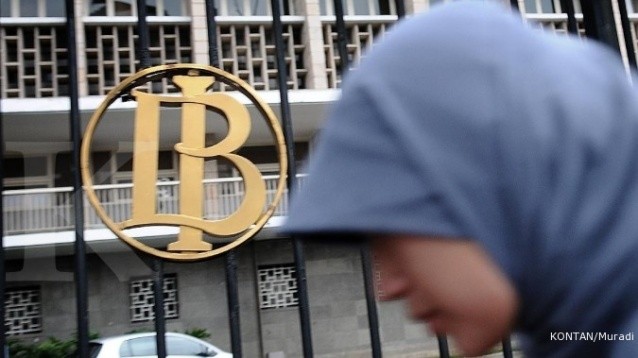Popular Reads
Top Results
Can't find what you're looking for?
View all search resultsPopular Reads
Top Results
Can't find what you're looking for?
View all search resultsHedging transactions continue to increase: BI
The volume of hedging transactions in Indonesia increased by 13 percent last year, as the central bank forced non-bank corporations to further manage their external debt amid the depreciated rupiah.
Change text size
Gift Premium Articles
to Anyone
Ayomi Amindoni
The volume of hedging transactions in Indonesia increased by 13 percent last year, as the central bank forced non-bank corporations to further manage their external debt amid the depreciated rupiah.
Bank Indonesia deputy governor Hendar said domestic corporations had signed derivative hedging transactions worth US$36.81 billion in 2014. The number rose in 2015 after the 2014 BI regulation on ‘prudential principles in managing external debt of non-bank corporations’ was issued.
“It grew 13 percent to $41.61 billion in 2015. In total, state firms hedging transactions recorded at $1.9 billion, rose more than 200 percent in 2014,” Hendar said in Jakarta on Monday.
Large state firms such as Pertamina, PLN, Garuda Indonesia, Petrokimia Gresik, Semen Gresik and Semen Padang signed master agreements with several banks on hedging transaction, he further added.
The regulation aimed to mitigate the various risks inherent with private external debt, specifically at non-bank corporations, the total of which has soared over the past several years, even surpassing that of the government, Hendar said.
According to central bank data, total external debt in the private sector over the past decade has increased three-fold from $54.3 billion at end of 2005 to $159.3 billion, accounting for 54.5 percent of the total external debt in Indonesia.
Further Hendar underlined that the currency risk in Indonesia’s external corporate debt was high as most of them were utilized to finance domestic companies that generate earnings in rupiah. It creates a currency mismatch as they have to repay external debt in foreign currency.
The lack of anticipation of this currency risk led big state-owned companies such as PLN and Garuda Indonesia to experience losses in 2014.
“Global uncertainty led to losses due to the currency risk. We know state-owned firms such PLN experienced substantial losses at that time, while Garuda Indonesia's profits declined from Rp1.4 trillion to just Rp 6.8 billion due to the exchange rate gap,” he explained.
According to him, the number of non-bank corporations reporting their prudential principle implementation continued to increase. As of the third quarter 2015, BI recorded 2,166 non-bank corporation reports or 85 percent of the total non-bank companies with foreign debts.
“Seen from the outstanding external debts, the corporation that conveyed the report has covered 95 percent of the total debt,” he added. (ags)










